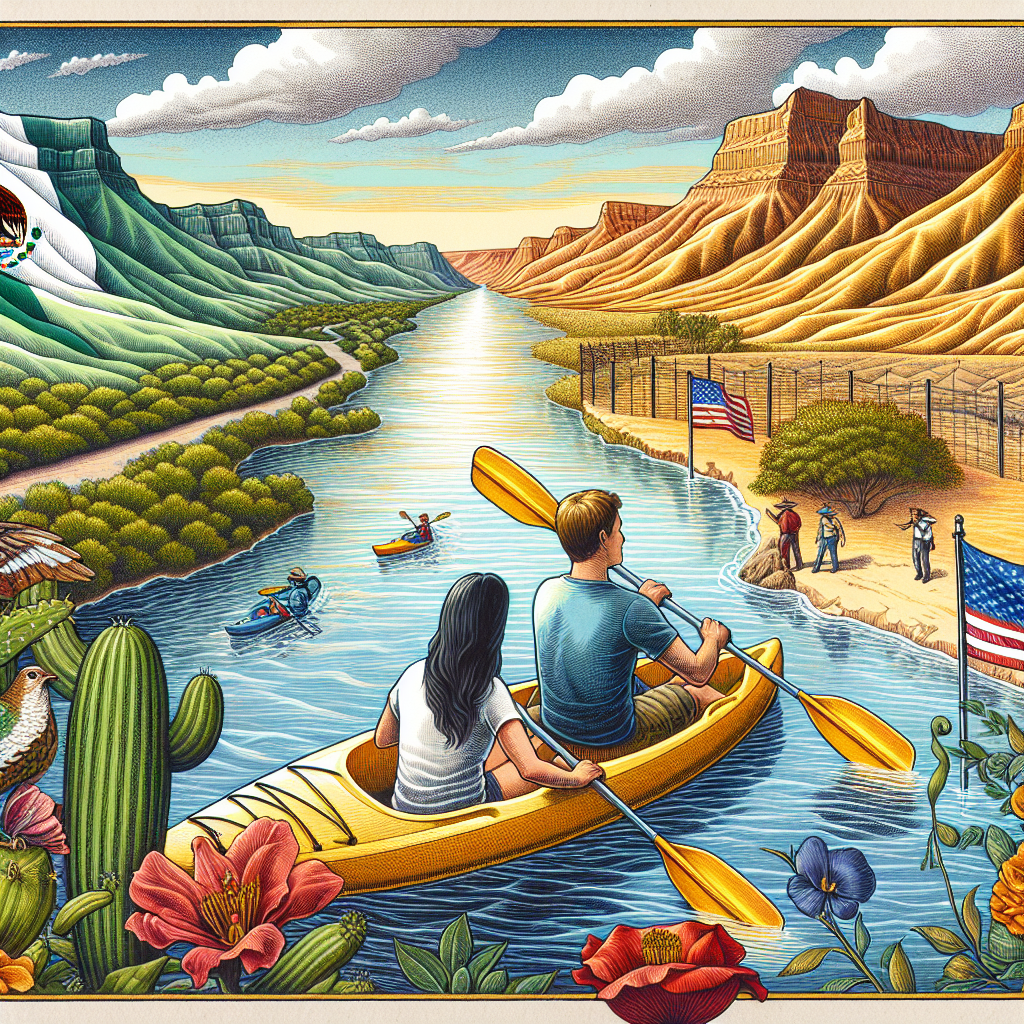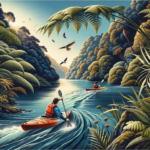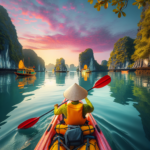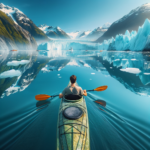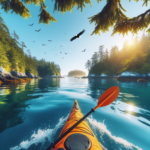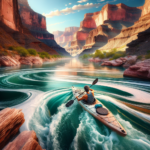Kayaking in Rio Grande, USA/Mexico
Introduction to Kayaking
Kayaking is an exhilarating outdoor activity that has gained immense popularity over the years. It offers a unique blend of adventure, exercise, and a chance to connect with nature. Whether you’re paddling through serene lakes, navigating swift rivers, or exploring coastal waters, kayaking provides a thrilling experience that appeals to both beginners and seasoned adventurers. The sport’s accessibility and the variety of environments it can be enjoyed in make it a favorite among outdoor enthusiasts.
In this article, we will spotlight the unique features of kayaking in the Rio Grande, a river that flows through both the USA and Mexico. This destination offers a fantastic experience for kayaking enthusiasts, thanks to its diverse landscapes, rich history, and vibrant culture. We’ll explore what makes the Rio Grande a must-visit spot for kayakers, from its challenging rapids to its tranquil stretches, and everything in between.
Kayaking in the Rio Grande is not just about the thrill of navigating its waters; it’s also about immersing yourself in the natural beauty and cultural heritage of the region. The river’s unique geographical features and the diverse ecosystems it supports make it a fascinating destination for anyone interested in outdoor activities. Whether you’re looking for a peaceful paddle or an adrenaline-pumping adventure, the Rio Grande has something to offer.
So, let’s dive into the world of kayaking in the Rio Grande, USA/Mexico, and discover why this river is a premier destination for kayaking enthusiasts. From its stunning scenery to its challenging waters, the Rio Grande promises an unforgettable kayaking experience.
Overview of Kayaking in Rio Grande, USA/Mexico
The Rio Grande, known as the Río Bravo in Mexico, is one of the most iconic rivers in North America. It stretches over 1,900 miles, forming a natural border between the United States and Mexico. The river’s geography is incredibly diverse, ranging from high desert landscapes to lush, green valleys. This diversity makes it an ideal location for kayaking, offering a variety of experiences depending on which section of the river you choose to explore.
The climate along the Rio Grande varies significantly depending on the region. In the northern stretches, you can expect cooler temperatures and a more arid environment, while the southern sections near the Gulf of Mexico are warmer and more humid. This variation in climate means that there is almost always a good time to go kayaking, no matter what time of year it is. However, the best times to visit are generally in the spring and fall when the weather is most favorable.
Historically, the Rio Grande has been a vital waterway for both the USA and Mexico. It has played a significant role in the cultural and economic development of the region. The river has been used for irrigation, transportation, and as a source of water for communities along its banks. This rich history adds another layer of interest for those who choose to kayak its waters, offering a chance to connect with the past while enjoying a modern adventure.
Accessing the Rio Grande for kayaking is relatively straightforward. There are numerous entry points along the river, many of which are located in national parks or other protected areas. These entry points often have facilities for launching kayaks and parking vehicles. Additionally, there are several outfitters and tour companies that offer guided trips and equipment rentals, making it easy for visitors to get started.
Kayaking Conditions in Rio Grande, USA/Mexico
The Rio Grande offers a variety of water conditions that cater to different levels of kayaking expertise. The river features both calm, flat-water sections and more challenging rapids, making it suitable for beginners and experienced kayakers alike. The upper sections of the river, particularly in the Big Bend region, are known for their dramatic canyons and swift currents, providing an exciting challenge for those looking for an adrenaline rush.
Weather conditions along the Rio Grande can vary widely depending on the time of year and the specific location. In general, the spring and fall offer the most favorable conditions for kayaking, with mild temperatures and relatively stable weather patterns. Summer can be extremely hot, especially in the desert regions, while winter can bring cooler temperatures and occasional snow in the northern sections. It’s essential to check the weather forecast before heading out to ensure a safe and enjoyable trip.
Tides and water currents in the Rio Grande are influenced by several factors, including seasonal snowmelt, rainfall, and dam releases. The river’s flow can change rapidly, so it’s crucial to stay informed about current conditions. Many sections of the river have established gauges that provide real-time data on water levels and flow rates, which can be accessed online. This information is invaluable for planning your trip and ensuring that you choose a section of the river that matches your skill level.
Environmental factors such as water quality and wildlife also play a role in the kayaking experience on the Rio Grande. The river supports a diverse range of plant and animal species, some of which are unique to the region. Paddling through these natural habitats offers a chance to observe wildlife up close, from birds and fish to larger mammals like deer and coyotes. However, it’s essential to practice responsible kayaking to minimize your impact on these delicate ecosystems.
Top Spots for Kayaking in Rio Grande, USA/Mexico
One of the top spots for kayaking on the Rio Grande is the Big Bend National Park area. This section of the river is renowned for its stunning canyons, including the Santa Elena and Mariscal Canyons. The dramatic cliffs and narrow passages make for an exhilarating kayaking experience, with plenty of opportunities to explore side canyons and hidden grottoes. The best time to kayak in this area is during the spring and fall when the weather is mild, and the water levels are ideal.
Another popular spot is the Lower Canyons section, which stretches from La Linda to Dryden. This remote and rugged area offers a more challenging kayaking experience, with numerous rapids and swift currents. The scenery here is breathtaking, with towering cliffs, lush vegetation, and abundant wildlife. Due to its remote location, this section is best suited for experienced kayakers who are prepared for a multi-day adventure. The best time to visit is in the spring when water levels are higher, making the rapids more navigable.
For those looking for a more relaxed kayaking experience, the section of the Rio Grande near Laredo offers calm waters and beautiful scenery. This area is perfect for beginners or those who prefer a leisurely paddle. The river meanders through a mix of urban and natural landscapes, providing a unique perspective on the region’s culture and history. The best time to kayak here is in the early morning or late afternoon when the temperatures are cooler, and the light is perfect for photography.
The Rio Grande also offers excellent opportunities for wildlife viewing, particularly in the Rio Grande Valley. This area is a hotspot for birdwatching, with numerous species of migratory birds passing through each year. Kayaking in this region allows you to get up close to these beautiful creatures in their natural habitat. The best time for birdwatching is during the spring and fall migrations when the diversity of species is at its peak.
Safety and Regulations
Safety is paramount when kayaking on the Rio Grande, and there are several regulations and guidelines that visitors should be aware of. First and foremost, it’s essential to wear a life jacket at all times while on the water. The river’s currents can be unpredictable, and a life jacket can be a lifesaver in an emergency. Additionally, it’s a good idea to carry a whistle or other signaling device in case you need to attract attention.
Local regulations may also require permits for certain sections of the river, particularly in protected areas like national parks. It’s important to check with local authorities or park rangers to ensure that you have the necessary permits before embarking on your trip. These permits help manage the number of visitors and protect the natural environment, so it’s crucial to comply with all regulations.
When it comes to safety gear, a well-fitted helmet is recommended, especially in areas with rapids or rocky terrain. A first aid kit, a map or GPS device, and plenty of water are also essential items to bring along. It’s also wise to paddle with a buddy or in a group, as this provides an extra layer of safety and support in case of an emergency.
In the event of an emergency, it’s important to stay calm and assess the situation. If you capsize, try to stay with your kayak if possible, as it provides buoyancy and makes you more visible to rescuers. If you’re unable to right your kayak, use your whistle or signaling device to attract attention. Knowing basic rescue techniques and practicing them before your trip can also be incredibly helpful in an emergency situation.
Amenities and Accommodations
The Rio Grande region offers a variety of amenities to make your kayaking trip more enjoyable. Several outfitters and rental facilities provide everything you need, from kayaks and paddles to safety gear and camping equipment. Many of these businesses also offer guided tours, which can be a great way to explore the river with the help of an experienced guide who knows the area well.
When it comes to accommodations, there are plenty of options to suit different preferences and budgets. For those who enjoy camping, there are numerous campgrounds along the river, many of which offer stunning views and easy access to the water. Some campgrounds are more primitive, while others provide amenities like restrooms, showers, and picnic areas. Be sure to check the availability and make reservations in advance, especially during peak seasons.
If you prefer more comfortable accommodations, there are several hotels and lodges in the towns and cities along the Rio Grande. These range from budget-friendly motels to more luxurious options with amenities like swimming pools, restaurants, and spa services. Staying in a hotel or lodge can be a great way to relax and recharge after a day of kayaking, and many offer convenient access to local attractions and dining options.
In addition to kayaking, the Rio Grande region offers a variety of other recreational activities. Hiking, birdwatching, and fishing are popular options, and there are numerous trails and parks to explore. Many areas also offer opportunities for cultural experiences, such as visiting historical sites, museums, and local markets. Whether you’re looking for adventure or relaxation, there’s something for everyone in the Rio Grande region.
Environmental Considerations
Preserving the natural habitats and wildlife of the Rio Grande is crucial for ensuring that future generations can enjoy this beautiful river. One of the most important ways to protect the environment is by practicing eco-friendly kayaking. This includes minimizing your impact on the natural surroundings by sticking to established trails and campsites, packing out all trash, and avoiding disturbing wildlife.
Using biodegradable soap and avoiding the use of harmful chemicals can also help protect the water quality of the Rio Grande. It’s important to be mindful of your actions and their potential impact on the environment. For example, avoid dragging your kayak over rocks or vegetation, as this can cause damage to the riverbank and disrupt local ecosystems.
Several conservation efforts and local projects are dedicated to preserving the Rio Grande and its surrounding habitats. Supporting these initiatives can make a significant difference in protecting this vital waterway. This can include participating in river clean-up events, donating to conservation organizations, or simply spreading awareness about the importance of protecting the Rio Grande.
By following these guidelines and being a responsible kayaker, you can help ensure that the Rio Grande remains a pristine and beautiful destination for years to come. Remember that every small action counts, and by working together, we can make a positive impact on the environment.
Highlights
When comparing kayaking in the Rio Grande to other popular kayaking destinations, several unique features stand out. One of the most notable is the river’s diverse geography, which offers a wide range of kayaking experiences. From the dramatic canyons of Big Bend to the tranquil waters near Laredo, the Rio Grande provides something for everyone, regardless of skill level or preference.
The biodiversity of the Rio Grande is another highlight that sets it apart from other kayaking locations. The river supports a rich variety of plant and animal species, many of which are unique to the region. This makes kayaking on the Rio Grande a fantastic opportunity for wildlife enthusiasts and nature lovers. Whether you’re birdwatching in the Rio Grande Valley or spotting deer along the riverbanks, there’s always something interesting to see.
Geographically, the Rio Grande is also significant due to its role as a natural border between the USA and Mexico. This adds a unique cultural dimension to the kayaking experience, as you can explore the rich history and heritage of both countries. From ancient Native American sites to historic border towns, the Rio Grande offers a fascinating glimpse into the past.
In terms of historical significance, the Rio Grande has played a crucial role in the development of the region. It has been a vital waterway for transportation, irrigation, and trade for centuries. Kayaking on the Rio Grande allows you to connect with this history in a meaningful way, as you paddle through landscapes that have shaped the lives of countless people over the years.
FAQ Section
- What is the best season to go kayaking on the Rio Grande? The best seasons are spring and fall when the weather is mild, and water levels are ideal.
- Are there beginner-friendly spots for kayaking on the Rio Grande? Yes, sections near Laredo offer calm waters suitable for beginners.
- What should I bring for a kayaking trip on the Rio Grande? Essential items include a life jacket, helmet, first aid kit, map or GPS, plenty of water, and a whistle.
- Are kayak rentals available? Yes, several outfitters offer kayak rentals and guided tours.
- How can I participate in local conservation efforts? You can join river clean-up events, donate to conservation organizations, or spread awareness about protecting the Rio Grande.
- Are guided kayaking tours available? Yes, many outfitters offer guided tours that cover various sections of the river.
- What safety measures are in place for kayaking on the Rio Grande? Safety measures include wearing life jackets, carrying signaling devices, and following local regulations and guidelines.
Final Thoughts
Kayaking in the Rio Grande, USA/Mexico, is a premier destination for kayaking enthusiasts. The river’s diverse landscapes, rich history, and vibrant culture make it a unique and exciting place to explore. Whether you’re seeking adventure or relaxation, the Rio Grande offers something for everyone.
It’s important to respect local guidelines and conservation efforts to ensure that this beautiful river remains pristine for future generations. By practicing responsible kayaking and supporting conservation initiatives, you can help protect the Rio Grande’s natural habitats and wildlife.
In conclusion, the Rio Grande is a fantastic destination for kayaking, offering a wide range of experiences for paddlers of all skill levels. From its stunning scenery to its challenging waters, the Rio Grande promises an unforgettable adventure. So grab your paddle and explore the beauty and thrill of kayaking in the Rio Grande, USA/Mexico.

